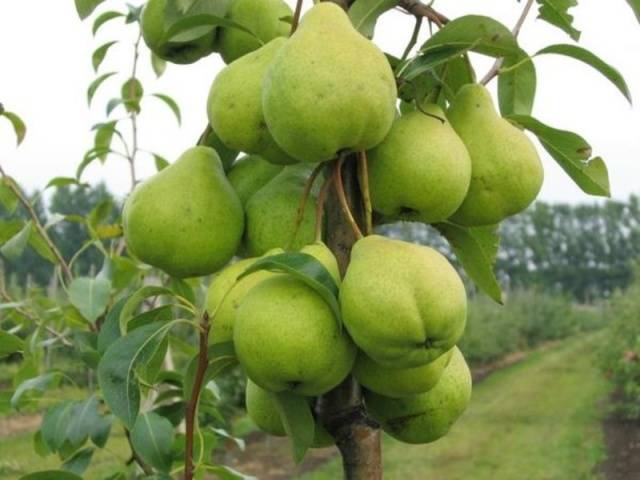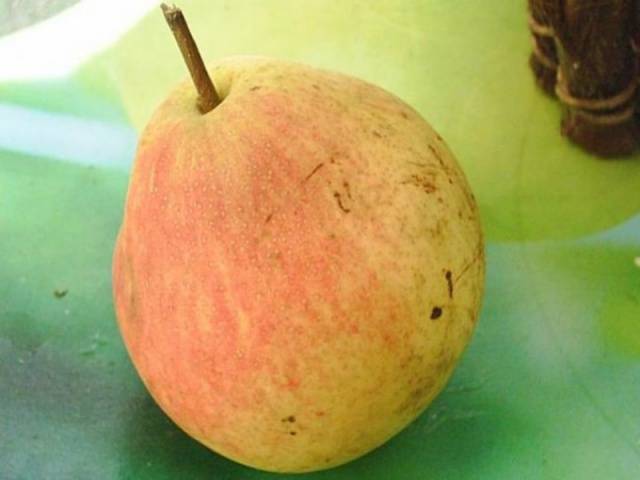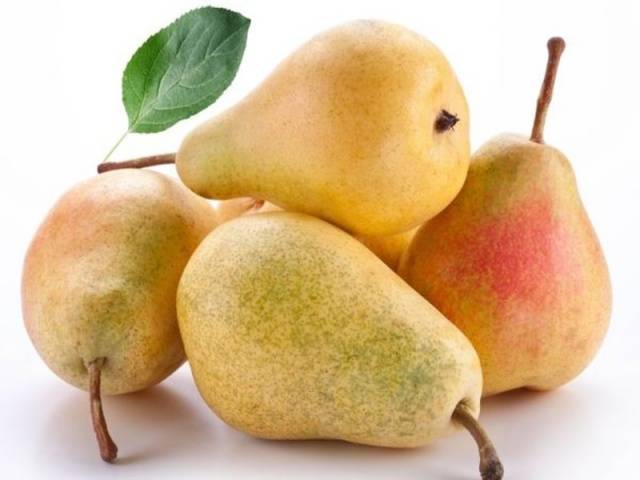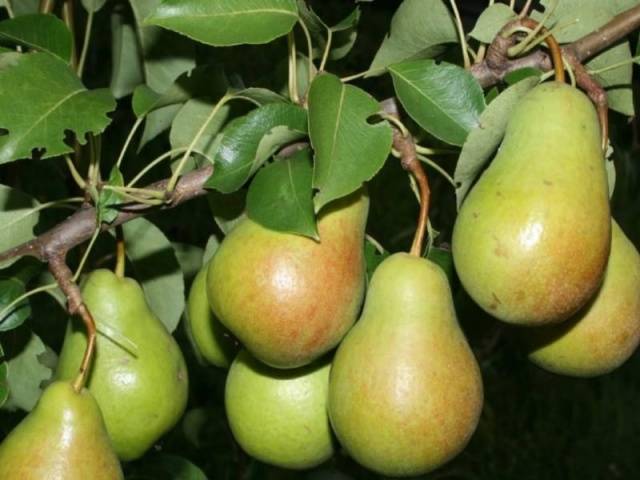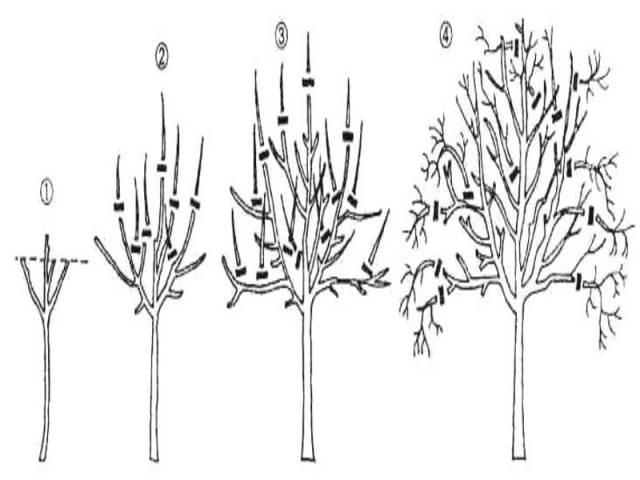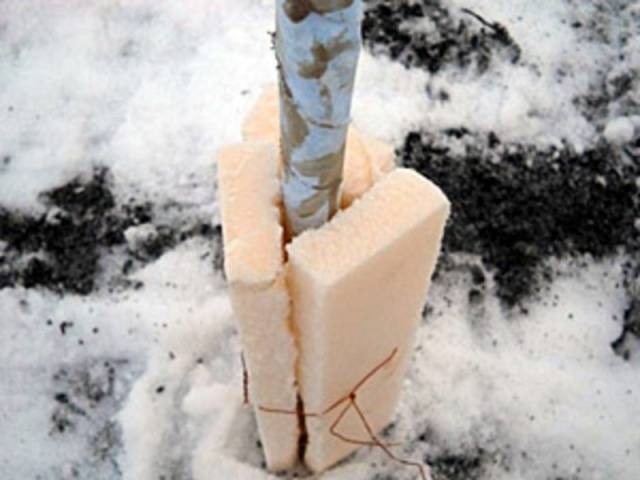Content
Pears are one of the favorite fruit trees of almost all gardeners. The varietal variety is simply amazing. Bergamot is one of the favorite varieties due to the excellent taste of the fruit and the many subspecies.
Fruits of this variety are distinguished by a slightly flattened shape. Summer residents love Bergamot for its adaptability to different growing conditions and its high resistance to temperature and humidity extremes.
Varieties of pear
Gardeners' preferences can be roughly determined by area. In the southern regions, Autumn Bergamot is more often grown. In the west, they like to plant Bergamot of Moscow and in memory of Prince Trubetskoy.
Bergamot Moscow
Trees of this variety have a neat crown with medium foliage. The pear is of medium height and tends to produce numerous shoots. Elongated oval leaves are of medium size and are distinguished by jagged edges.
The flattened-rounded greenish pears (as in the photo) have a pleasant taste. The pulp is juicy, medium density. The sweetness of the fruit is softened by a slight acidity. If the fruits of this variety are stored for a long time, then the taste acquires astringent properties and the acidity increases.
The first worthy harvest of the Bergamot Moskovsky variety yields in 4 years, and about 20 kg of fruits are collected from one trunk.
Bergamot Autumn
The variety has been popular with gardeners for a very long time. Trees grow of medium height, the crown is formed of a pyramidal type and has short and thick weakly pubescent branches. The shape of the leaves is oblong and pointed. Ripe fruits of the Bergamot Autumn variety reach a mass of 80 g and have a loose flesh, they can be stored for about three weeks. Frost resistance is one of the important advantages of the Autumn variety.
The fruits of this variety ripen with a medium rounded shape (photo). The peel of a pear is yellowish-green in color, with small dots. A blush may appear on the sunny side of the fruit. The pulp is characterized by a loose consistency and a sweet-wine flavor.
Negative qualities of this Bergamot variety: susceptibility to diseases (most often affected by scab), low yield level. Therefore, there are unflattering reviews about the variety.
Bergamot Nutmeg
Features of this pear variety: trees with thick branches grow quite tall, and the crown can be about 12 m in diameter. Bergamot Muscat is a prolific variety, about 250 kg of fruit can be harvested per season. It is noteworthy that this pear variety bears excellent fruit even at 60 years old.
The fruits begin to sing in August, the fruits are yellowish in color with specks and grow in an oblong shape. Juicy, creamy pulp has a pleasant taste.
Bergamot In Memory of Prince Trubetskoy
The tree is characterized by the formation of a dense crown. The leaves grow in an oblong shape. Four-year-old trees already give a good harvest, and the pear bears fruit annually or every season.
Fruits of a wide pear-shaped form are distinguished by greenish-yellow shades. They differ in juicy pulp of medium density.Bergamot fruits can weigh about 190 g and can be stored well until spring, provided that appropriate conditions are met.
A distinctive feature of this pear variety is its unpretentiousness and resistance to diseases (especially fungal). This bergamot variety takes root well on any soil and develops well under different weather conditions. Extremely frost resistant. The harvest begins to ripen in September.
Planting seedlings
When choosing a place for planting Bergamot pears, you should give preference to elevated, well-lit areas. Of the soils, loam or chernozems are preferable.
Planting stages
- The seedling pit is prepared in advance. The parameters are taken for its root system, but they are at least 40-50 cm in depth and 70-85 cm in diameter.
- To pre-fertilize the soil, the pit is dug a little deeper and 2-3 buckets of fertile soil are poured to the bottom (the earth is mixed with peat, humus, you can add superphosphate and ash).
- A peg is necessarily driven into the center to tie up the trunk. Otherwise, the Bergamot pear may deform.
- The seedling is placed in the pit, the roots are gently straightened and the pit is filled up. At this stage, it is important to avoid excessive deepening so that the root collar is not buried.
The right time for planting Bergamot pears: in the spring - the last days of April, and in the fall - until October 15.
Tree pruning
A similar operation is carried out in order to regulate the growth and illumination of the crown, eliminate old and dried out branches, to increase yields.
There are two methods for pruning Bergamot pears.
- Pruning branches involves cutting off the tops of branches and annual growths. Thanks to this method, the "pulling" of the tree upwards is suspended and the horizontal growth of branches is stimulated.
- Thinning is intended to remove growth branches at their very base. Thanks to this method, the flow of sunlight into the crown is facilitated, and air exchange is improved. These measures lead to an increase in the protective properties of the Bergamot pear, an increase in its yield.
For pruning in spring, a period is selected when severe frosts have ended, but the growing season has not yet begun. The main goal is to remove branches growing inside the crown.
In one-year-old seedlings, the top is shortened so that in the future the crown of Bergamot does not darken and the lower branches grow.
For the next season, the skeleton of the crown is already formed: the central conductor is cut off by a quarter of the length.
When pruning young Bergamot pears, do not get carried away, as this can lead to later fruiting.
In old pears, the shoots are shortened by half or two-thirds of the length. Thanks to this, the trees are rejuvenated.
Watering and feeding
Bergamot is quite tolerant of dry periods. Watering requirements may vary by region.
But seedlings in the early years especially need soil moisture. Therefore, in dry periods, it is recommended to water the Bergamot pear 3-4 times per season at the rate of two or three buckets under each tree.
In the following years, the number of irrigations decreases, but the volume increases (approximately one and a half to two times).
The basic rule of watering: do not pour water on the root neck. It is best to form an annular groove around the Bergamot pear. Root exposure should not be allowed, but if this happens, then the roots should be covered with moist soil. It is believed that with full watering, the soil should be moistened to the depth of active roots - this is about 55-65 cm.
When moistening, the composition of the soil must be taken into account: on sandy soils, pears are watered in small portions, but often. And for heavy clay soils, rare but abundant watering is recommended.
In early spring, Bergamot pears are fertilized to ensure a high-quality and bountiful harvest. It is recommended to use nitrogen fertilizers, they are added to the soil when loosening.
In the autumn period, the basis of top dressing is made up of potash and phosphorus supplements. They are introduced into the soil to a depth of approximately 40-50 cm in a circle around a Bergamot pear.
Preparing pears for wintering
Preparatory work usually begins with cleaning the area around the tree. Fallen leaves and carrion from branches are collected, dried fruits are removed. Old mulch is also removed. It is advisable to burn all this garbage.
Dried and diseased branches are removed from the tree. The entire crown and trunk are sprayed from the scab. You can use a 5% urea solution for this. Growths are also removed from the trunk.
To protect the trunk of Bergamot from rodents (hares, mice), the tree is wrapped in protective material. For these purposes, ordinary burlap, spruce forest are suitable.
Diseases and pests
The condition of the tree must be monitored throughout the season. There are several of the most common diseases.
Scab affects almost all trees (foliage, fruits, shoots, flowers). The disease manifests itself in the form of brown spots. Favorable conditions for its occurrence are prolonged rains and low temperatures. The close proximity of other Bergamot pears also contributes to the spread of diseases. The main preventive measures are spring spraying of pears with Bordeaux liquid and 7% urea solution. Moreover, it is necessary to process not only the tree, but also the soil around the trunk. In autumn, all fallen leaves are carefully collected and burned.
Powdery mildew refers to fungal diseases and affects the leaves of young shoots. The disease leads to foliage falling. Warm, dry weather contributes to the spread of the disease. And, accordingly, control measures include regular watering, removal of damaged branches. Of the chemicals, spraying the crown with a solution of colloidal sulfur can be distinguished.
The green aphid is considered the main pest of the Bergamot pear variety. The insect sucks the juice from the leaves, which helps to stop the development of shoots. As means of control, special preparations are used that are sprayed on trees. Moreover, it is advisable to carry out the procedure three times: on the eve of the blooming of leaf buds (use Kinmix), before flowering (use Agravertin) and when an ovary appears (the tree is treated with Spark).
Bergamot pear can be considered a real decoration of gardens. This variety is widespread in Europe, the CIS countries. This well-deserved popularity is due to the unpretentiousness and high yield of the variety.
